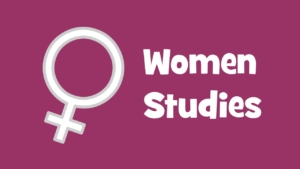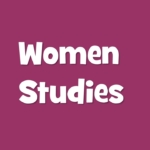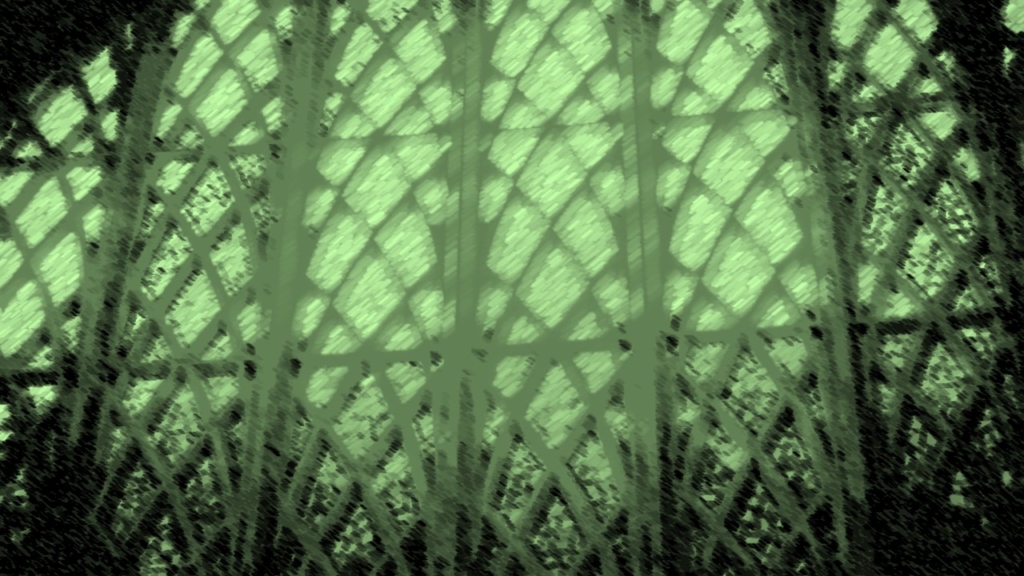Dawn, The Review, March 13-19, 1997
 Just as the communists saw religion as a dangerous tool for the exploitation of the masses, the feminists see it as an instrument of the patriarchy. Women who stand up for their rights are often confronted with arguments from the sacred beliefs of Islam, Christianity and Judaism to show that women were created as inferior to men and for the sole purpose of providing them comfort. Likewise, feminism has generally earned a reputation of being a movement that is against religion. Indeed, one of the earliest feminists – Mary Wollstonecraft – became distinctively notorious for defying all conventions. It would only help to remember that her attitude was equally shared by her husband – the philosopher Godwin – and a number of other men of her time. Incidentally, the modern concept of feminism was born at a time when the European mind had already started eliminating religion from its practical life. Looking at the development of the human thought over the last two hundred years it seems only natural that a number of feminists have rejected religion altogether.
Just as the communists saw religion as a dangerous tool for the exploitation of the masses, the feminists see it as an instrument of the patriarchy. Women who stand up for their rights are often confronted with arguments from the sacred beliefs of Islam, Christianity and Judaism to show that women were created as inferior to men and for the sole purpose of providing them comfort. Likewise, feminism has generally earned a reputation of being a movement that is against religion. Indeed, one of the earliest feminists – Mary Wollstonecraft – became distinctively notorious for defying all conventions. It would only help to remember that her attitude was equally shared by her husband – the philosopher Godwin – and a number of other men of her time. Incidentally, the modern concept of feminism was born at a time when the European mind had already started eliminating religion from its practical life. Looking at the development of the human thought over the last two hundred years it seems only natural that a number of feminists have rejected religion altogether.
However, all of them – rather, most of them – have not. It is remarkable to observe how important a position is occupied by spirituality in the modern feminist consciousness. For those who realize that there is more than just the material side of life to be considered, the world offers two options.
The new way
Some feminists have attempted to find alternatives to male-defined religions, either working from within the folds of the known religions or without. For instance, there has been a search for the lost ‘goddess’ – the notion that there was a goddess who was worshipped in the matriarchy at the beginning of time and she was subsequently thrown out by the worshippers of the ‘male’ God. This theme is taken up most comprehensively in the studies by Merlin Stone. Another author, Charlene Spretnak, believes that the concept of goddess legitimizes female power, while conforming to the image of a lost ‘goddess’ – the notion that there was a ‘goddess’ who was worshiped in matriarchy at the beginning of time and she was subsequently displaced by the worshippers of the male God. Erica Jong’s novel Fanny is yet another expression of this idea. This strand of feminism could be called a ‘the goddess theology’.
Other feminist theologians do not go as far as that. The Feminine Face of God (1991) by Sherry Ruth Anderson and Patricia Hopkins restricts its sphere to “… learning the art of inner listening. If women are to pioneer a new way of embodying spirit in the world today, one thing seems certain: we must listen to the deep source of wisdom within ourselves and tell the truth about our lives and what we are learning.” The ethos of the books is set in a dream, where the prophets of the Old Testament appear to one of the authors and prophecy. “The time has come for women to accept their spiritual responsibility for our planet.”
The approach seems to differ from the one adopted by Merlin Stone. Yet what is common between them is that no sacred text holds a central position and there is no link with the tradition.
New light on the old path
It is not possible to think of a religious framework without assuming the importance of a sacred text and a tradition (In Islam, these are referred to as al-kitab and al-sunnah respectively).
The Woman’s Bible by Elizabeth Cady Stanton and her colleagues (in two parts, 1895 and 1898) was among the earliest major efforts to find an answer to the ‘woman question’ through religion. This has often been seen as an “analysis and critique of the Bible from a feminist point of view,” and indeed it set an example for the future scholars of Christianity, Judaism and Islam to expose chauvinistic biases of certain interpreters by paying attention to the text. For instance, the Book of Genesis records that God said to Eve: “Thy desire shall be to thy husband, and he shall rule over thee.” This was a favourite anti-suffrage argument The Woman’s Bible pointed out that it was not a command, but a prediction – just like the corresponding pronouncement to Adam that he should eat his bread in the sweat of his face. If it were a command, it would be disobedience on man’s part to invent machines to make his work easier.
In our own times, and in our own domain, the work of Fatima Mernissi and Rana Kabbani follows much in the same line – they have interpreted the Islamic texts and history to show that improving the condition of women was an ideal advocated by Islam but the rights were seldom realized in the Muslim society of the latter days – basically because it was ruled by men.
From a traditionalist point of view, there is one issue of concern here. This method of inquiry is utilitarian. It begins with a pre-determined approach.
Hence there is a danger that the new interpreters can also end up giving us a biased, half-true and selective version of the religious ideal. This new version may be more egalitarian than the male-oriented conservative interpretations but there is no guarantee that it will also be more holistic.
So far we have discussed four groups of feminist thinkers in the field. (1) The feminist atheists, (2) the goddess theologists, (3) the theologist interpreters of ancient religions, and (4) the utilitarian interpreters of ancient religions. Lastly we turn to the feminist traditionalists.
The feminist traditionalist approach is best illustrated in the words of Amina Wadud-Muhsin. In the preface of her book Quran and Woman (1992) she related that in the Muslim intellectual domain, important disciplines like shari’ah (Islamic Law), grammar, literature and politics developed, directly or indirectly, out of a desire to understand the Quran. “As the various disciplines developed, they satisfied particular needs or answered particular questions that had arisen. The question of the concept of the woman in the Quran did not arise – perhaps because the concept of gendered man did not arise. The critical questioning of the functions and responsibilities of each gender has only recently been asked: inspired, for the most part, by the sad condition of woman in Islamic societies at the time of independence from colonialist forces. Once the question arose, a sound method of answering that question needed to be developed within the fields of Islamic scholarship.”
What is not said here but clearly intended is that if the answer from the Holy Book does not conform with the tenets of the modern egalitarian thought, then the traditionalist feminists would accept the answers from the Holy Book and re-adjust the modern thought in that light.
Nevertheless, they emphasise the need to develop a new methodlogy for interpreting the Quran. This methodology, however, is not based on any pre-conceived position on the gender issue. It is simply a way of looking at the text and the traditional with the tools of modern linguistics and epistemology.
My awareness of the traditionalist feminists is restricted to only one more name: Dr Riffat Hasan, who is also the only major Pakistani theologian feminist. In the rest of the article I would like to introduce the work of these two.
Amina Wadud-Muhsin follows a ‘hermaneutical model’ – i.e., she approaches the sacred text from three perspectives: (a) the historical context of its revelation, (b) its grammatical composition, and (c) the whole text, its Weltanschauung, or world-view. “Often, differences of opinion can be traced to variations in emphasis between these three aspects,” she writes.
She revisits such issues as divorce, patriarchy, polygamy, witness, inheritance, male authority and child care not in isolation but in the broader perspective of the “whole” Quran.
An interesting observation of hers is that while relating the story of Marium, Quran pays a good deal of attention to the feminine nature of her experience: the pain of child-birth, the shame and the guilt. This and several other examples depict the seriousness of the text towards the female domain of life so that it is not considered as “less important” than the male domain.
The work of Dr Riffat Hasan explores even deeper waters, she is also more out spoken. “There are some people (in Pakistan), call them feminist movements or whatever, whose orientation is such that they are committed to striving for the liberation of women on secular terms. In other words, they think that Islam has got nothing to do with the human rights. I have been in a fundamental disagreement with them since 1983 when I first met them.”
Her method is what she describes as a “three-fold criteria,” based on (a) the principles of linguistic accuracy (what did a particular word mean at the time when the Quran was revealed?), (b) the question of philosophic consistency (if the word ‘Adam’ occurs twenty-five times in the Quran all its functions and meanings should be regarded as one), and (c) the ethical criteria (since God is just and the Quran is the word of God, the Quran cannot be used to perpetuate injustice).
Her major focus is the story of creation. She analyses the text of the Quran to show that it does not support the myth f natural male superiority as it either states or implies that (i) woman was not created from man’s ribs, she was just as much a primary creation as man; (ii) that she was not responsible for the fall of man – they both took the decision as equals; (iii) and that woman was created in a fundamental, not in an instrumental position – she was not created merely to serve the man but as an equal individual.
Some of these views have long been in circulation, especially since Iqbal argued against the myths of the spare ribe and original sin in his major philosophical work, The Reconstruction of Religious Thought in Islam (1930/34). She presents a refreshing overview of the word ‘Adam’ for the sake of ‘philosophical consistency’. “The word Adam does not occur in the context of creation, except once. And (there) (in Aal-e-Imran) it says that the likeness, and the likeness of Adam, both came from the earth – which is an explication of the word ‘Adam’. In the Quran, the word ‘Adam’ is used thrice as the name of a prophet. For the rest of the twenty-one out of twenty-five times the word Adam is used as a symbol of his likeness. When the Quran is speaking of human beings in their physical capacities it was the words bashr or insaan or naas. But when it is speaking of them as God’s representatives on earth – then it says ‘Adam’. So it is when the human beings reach the stage of moral maturity, when they are capable of making a moral choice, at that point they are called Adam.
It is interesting to notice that there is no such thing as “the feminist interpretation of religion.” Among those who introduce themselves as feminists and then speak about religion, we find at least five different strands of thought. The differences between them are so great that if representatives of all five schools are to be brought together on one forum, they can easily form patrols against each other – not just on the lines of gender issue, but on the very basis of differences in their views about the nature of religion itself. Some call it a weakness of feminism. Others, its strength.
 This articles is part of the series “Women Studies”: Let’s say no to a peurile feminism | Women and cinema in Pakistan | Women as prophets in the Quran | A woman’s Islam? | Gender roles in education | Women’s right to divorce in Islam | Liberty, equality, fraternity | In religion’s wake | ‘Men are from Mars, women are from Venus … no more’ | ‘History, she wrote’ | ‘Debunking myths‘ | Women in the Quran | Portrayal of women in the stories of Sadat Hasan Manto
This articles is part of the series “Women Studies”: Let’s say no to a peurile feminism | Women and cinema in Pakistan | Women as prophets in the Quran | A woman’s Islam? | Gender roles in education | Women’s right to divorce in Islam | Liberty, equality, fraternity | In religion’s wake | ‘Men are from Mars, women are from Venus … no more’ | ‘History, she wrote’ | ‘Debunking myths‘ | Women in the Quran | Portrayal of women in the stories of Sadat Hasan Manto
